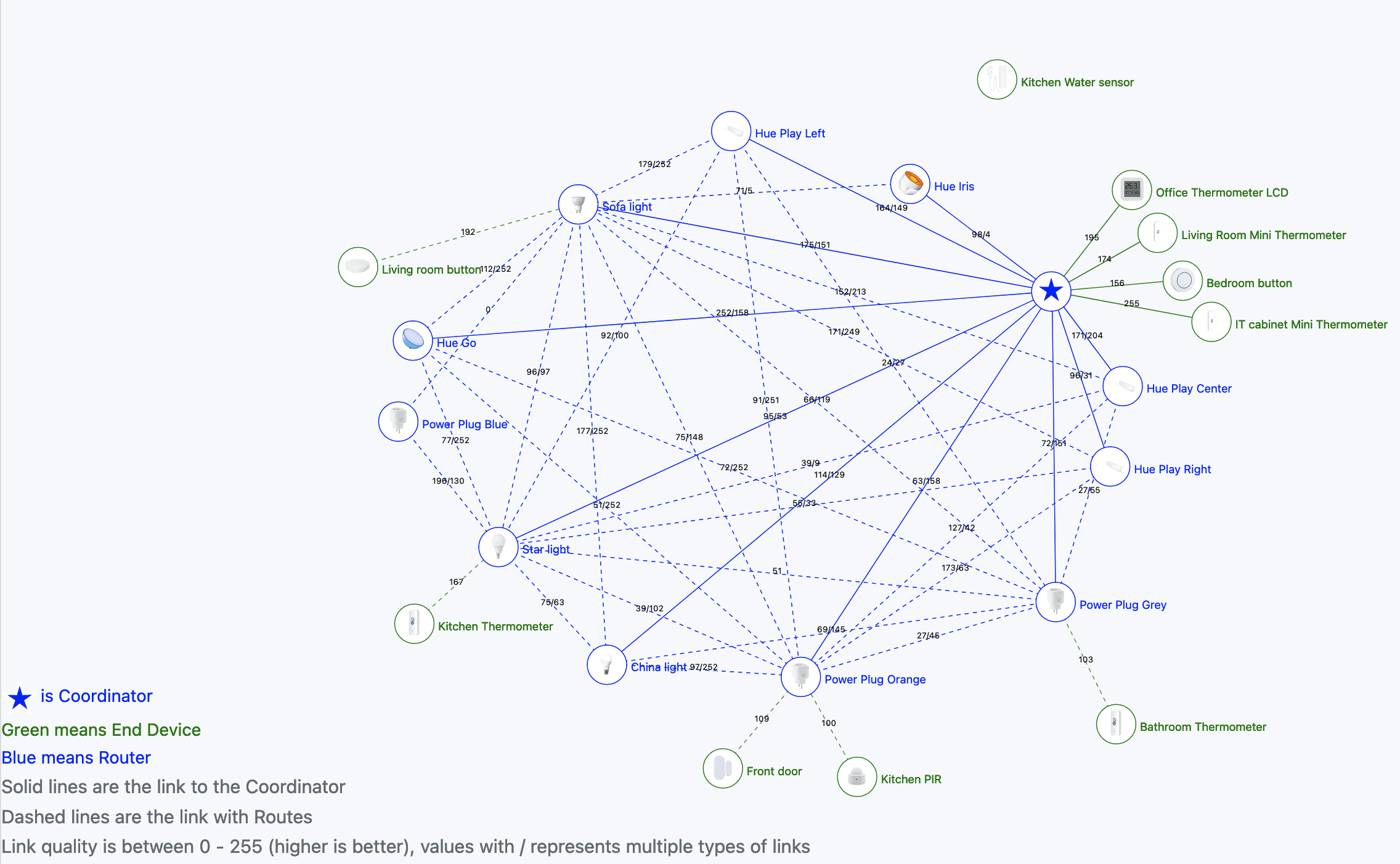Category: Software
-

Home Assistant: WP6003 Air Box
I recently got a WP6003 Air Box (Aliexpress). The official product page seems to be offline but can be accessed through Archive.org. It’s quite straightforward to integrate in a Bluetooth Proxy and Home Assistant thanks to Omar’s work. The major problem I have with it, is that the Bluetooth (4.0) range is terrible. Neither my…
-

Home Assistant: Zigbee routers
In my Home Assistant quest and simplifying (not sure if that’s actually happening) and getting more control (aka less reliant on the cloud and 3rd parties) I’ve been playing with Zigbee. Zigbee is quite cool because it’s a mesh network. As I used it before with my Philips Hue bulbs, I was eager to expand…
-

Home Assistant: Getting rid of Philips Hue bridge
In my Home Assistant quest and simplifying (not sure if that’s actually happening) and getting more control (aka less reliant on the cloud and 3rd parties) I’ve been playing with Zigbee. Zigbee is quite cool because it’s a mesh network. As I used it before with my Philips Hue bulbs, I was eager to expand…
-

Home Assistant: Assign entities to areas
I’ve finally started working with Home Assistant and while the learning curve has been steep, it’s been fun. I’m going to post some random notes (mostly for myself) on things I discovered, and I need to keep in mind. For example, I have set up an ESP32-c3 Bluetooth Proxy for a Mi ble thermometer. I’ve…
-

Home Assistant: ESP32-C3 Bluetooth proxy
I have set up an ESP32-c3 Bluetooth Proxy for a Mi ble thermometer (and I have a few other BLE sensors that I haven’t managed to set up yet). The proxy config can be found here. Be sure to modify the variables to match whatever you want to do. I’m using static IPs because auto…
-

Unable to connect with Autodesk Desktop Licensing Service
Recently migrated Shan from Windows to an Apple/macOS and every reboot she kept getting “Unable to connect with Autodesk Desktop Licensing Service” when launching AutoCAD on her Mac. The official bullshit is to reinstall the Licensing Service (why is there even such a thing). But alas, that didn’t fix it. Also updating AutoCad to 2025…
-

GTFS
As iRail’s servers go down once in a while (and contain some legacy files, making it a bit messy), I decided to back up and host the GTFS feeds of Belgian Railway (NMBS), and the 3 Belgian bus companies (De Lijn, TEC and MIVB) at gtfs.flatturtle.cloud. Every night, around 3am (CET), the GTFS files are…
-

WordPress unable to connect to SQL database
Yesterday, three blogs I’m hosting suddenly went offline and alerts went off. They all had the same error that they couldn’t connect to their SQL database, and it seemed that the container recently was auto-updated. Docker logs also showed (which may or may not have been related): This was odd. I started the usual troubleshooting:…
-

Software & time-saving
Software is typically sold on the promise of increased convenience or productivity, or both. If we were to believe all the clichéd marketing lingo about time-saving, our lives would now consist largely of uninterrupted leisure time. In a recent post, Brett Scott argues persuasively that, far from making our lives easier, technology is making them…







